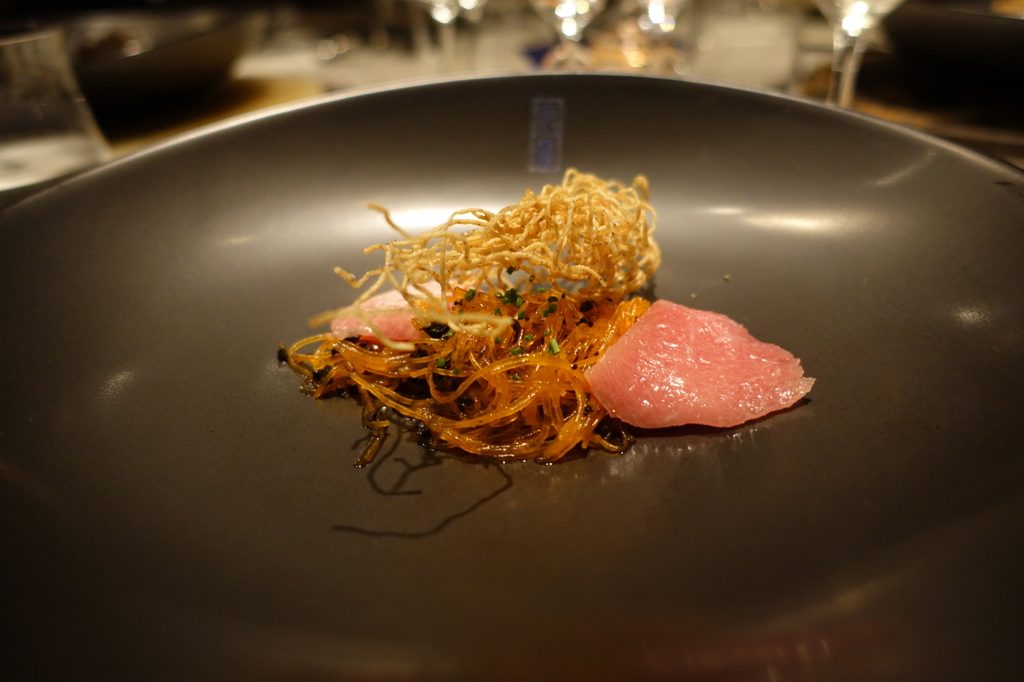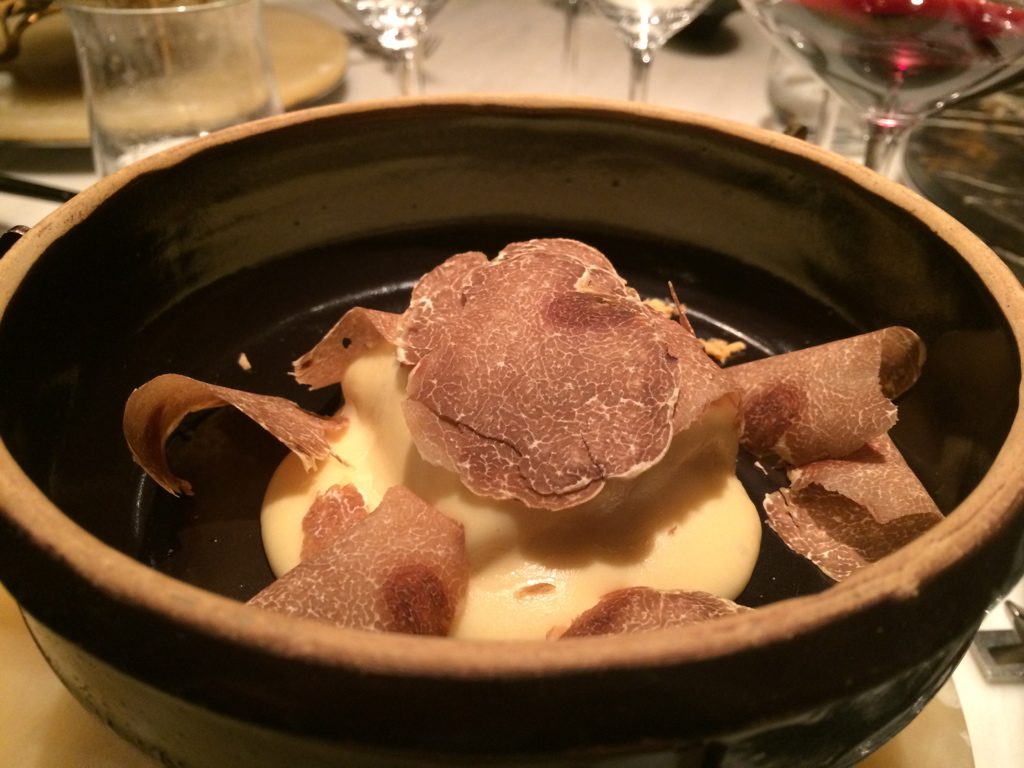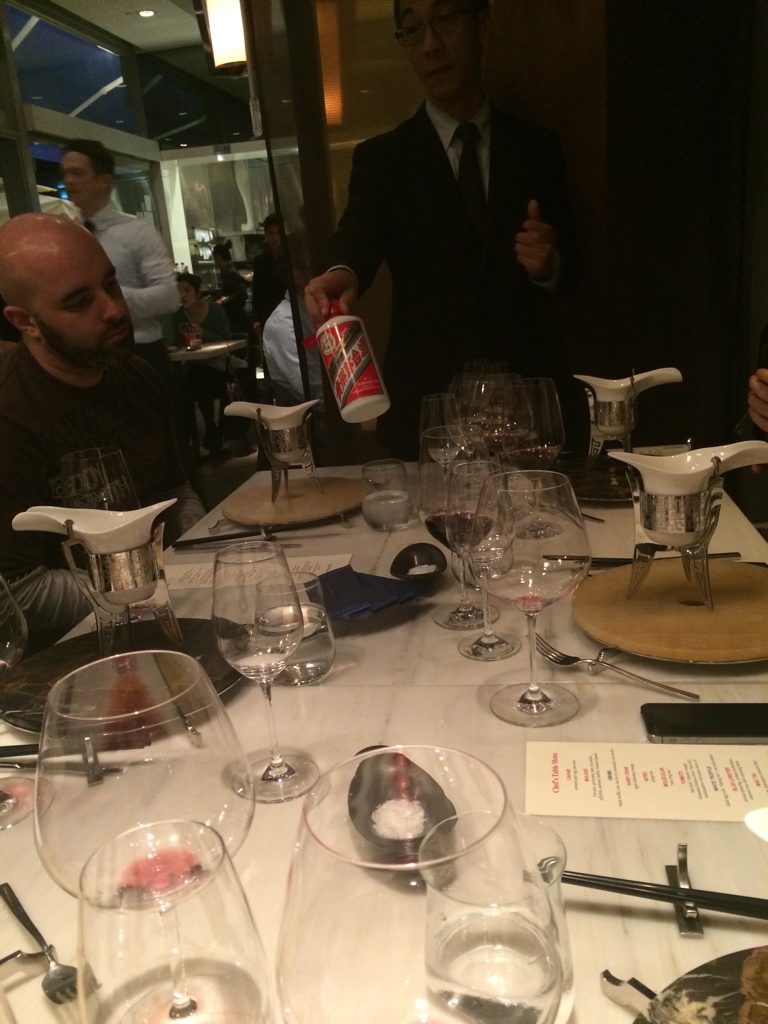
London born Canadian raised Alvin Leung was an engineer for 20 years before he started cooking in Bo Innoseki in 2003, he bought that place for a mere £3000. He’s monikered as The Demon Chef, and has created the cuisine he calls ‘X-Treme Chinese’. Edible condoms on mushroom beaches has been some of his creations! He describes his nickname as coming from the Greek word “Daimôn”, meaning “good-spiritedness”. While X-Treme Chinese is a marriage of fusion cuisine and molecular gastronomy. In 2005 he opened Bo Innovation in the business district Wan Chai.
Alvin, albeit self-taught, was inspired by dining at the likes of Ferran Adria’s former mecca el Bulli, Heston Blumenthal’s Fat Duck, along with Joël Robuchon’s restaurants. From his experiences he aims to develop, deconstruct and push the boundaries of traditional Chinese food, into head-turning and taste-bud provoking dishes using modern techniques. In 2009 Michelin guide awarded Bo Innovation two stars, demoted it back to one star in 2010, then awarded the second star back in 2012, finally promoting it to three stars in 2014.
Onto the ‘experience’ ahead I chose the Chef’s Table Menu:

Amuse bouche of spring onion egg waffles were playing homage to the HK street food favourite. 
Caviar – smoked quail egg, taro nest. Inspired by dim sum taro croquettes as you can see and they’re astounding things. Total one bite wonders.

Mulhoe – foie gras, gochujang, pear, sea urchin, jelly fish, seaweed, halibut, beetroot kimchi. Mulhoe is a Korean dish, usually a medley of raw fish traditionally made by fishermen and is had over rice. Not here though, as the starch is tapioca balls in pear juice, it’s abundantly clear that this is a dish greater than a sum of its parts. Impressive. 
The gochujang came in a tube that you can squeeze onto the dish which gave it that authentic fermented chilli kick. 

Umami – black truffle, toro, har mi oil, vermicelli, rice noodle. (Har mi oil is dried shrimp oil). The har mi oil, delivers the umami as promised, and is punched up by a whack of chilli. It’s shimmer coats vermicelli two ways (soft and crispy). I’m familiar with all the components of the dish, not in this ensemble before. 

Hairy Crab – aged chinkiang vinegar. Hairy crab is a sought after ingredient in the East, and they pump the soufflé full of its rich tamales. Combined with the aged chinkiang vinegar, it blasts your tongue with velvety mouth-coating richness. It was dish I didn’t want to end. 

Nitro – ginger tea. By tradition after eating a hairy crab meal, ginger tea is served. This is driven by the Yin/Yang effect of food where crab is considered to have a cooling effect on the body so the ginger tea is drunk for its warming influence. Of course there is no tea in sight but nitro-poached ginger tea meringues prepared by our table. Being ‘adults’ we of course see who can blow smoke rings! 

Molecular – ‘xiao long bao’ – all the tasty soupy characteristics are there but the flavour is intensified in a molecular ball that just pops in your mouth. It’s their signature and I can see why.
Tomato – “pat chun” vinegar, fermented Chinese olives “lam kok” marshmallow with green onion oil. A wonderful melange of tomato sweetness and acidity. Remember in Hong Kong you go from right to left and from the right we have the tomato marinated in pat chun vinegar, a sphere of tomato jelly with fermented Chinese olive sprinkles, last but not least a tomato marshmallow made from tomato water and drizzled with spring onion oil. I believe these were the palate cleanser but unfortunately it was the most forgettable dish. 
White truffle – duck egg yolk “cheung fun”, yak milk cheese. This is a clever take on using cheung fun pasta to wrap a rich duck egg yolk, smother it in creamy fondue like cheese with lashings of truffle to get something that will change your world. 
Blue lobster – shrimp dumpling, Sichuan hollandaise, charred corn, xiaoshing broth. It seems there are multiple techniques in every dish and it doesn’t stop here. There was a good balance of numbing Sichuan spice to know it’s there, to only enhance to sweet lobster. I could have eaten at least 30 of these no joke. 

Mao Tai – hawthorn, lemon grass, passion fruit. This is another palate cleanser inspired by the Chinese spirit (mao tai) strong enough to use as rocket fuel. Fortunately/unfortunately (which ever you want to look at it) it’s dialled-down enough for it to be refreshing with the passion fruit and hawthorn. (A berry that is used to make haw sweets, when you know you know). The one shot beverage is was served in a lipped beaker that had to be drank tilted at 90 degrees. The notion is to gaze into the heavens like how the Emperors of China would have in ancient times. 
Sweetbread, oyster sauce, mountain yam, spring onion, ginger, kale. Battered sweetbread nestling on chanterelles with oyster sauce, garnished with crispy kale and an oyster leaf. The yams weren’t starchy at all like normal yams but was more of the consistency of a cooked pear. Overall it was a cracker of a dish. 

Saga-gyu beef, black truffle, cheung fun. Paper-lined metal bowls, with bamboo skewers al la Hong Kong street food dai-pai-dong style. It came with luscious slices of Saga-gyu beef and grated black truffle on cheung fun. The whole dish was amped with richness and totally stood out. 
Almond – genmai, Okinawa black sugar, cinnamon. The almond ball was panacotta like, perhaps soft desert tofu even. It worked well with the sweet genmai (Japanese green with brown rice kernels) and the wisp of cinnamon. Again another deconstruction of classic desert, tofu with sugar cane syrup.

Every wine was delectable but the one that stood out was moscato desert wine, which I found very fruity and refreshing unlike most sickly desert wines I’ve tried. 
Coconut – palm sugar ice cream, piña colada snow, pandan leaf cream, cherry jelly, dried raspberries and coconut chocolate soil, coconut water meringue. It was my birthday so I’m allowed 2 deserts! This was nothing short of sublime!

The petit fours came in a bird cage of rotating shelves – served with a weeny cup of cold Eight treasure tea. Each petit fours had a component of the core ingredients which the eight treasure tea was made out of. For example, the milk candy was flavoured with chrysanthemum. It as a very fun, very Heston Blumenthal thing to do. 


The verdict:
When did I go? November 2014
The damage: Expect to pay $3500 – $4000 HK (£350-£400) per head with wine pairing.
The good: Tis when a technique-driven meal, so inventive it develops into a 6 hour experience and changes your whole lens on eating. It was an emphatic evening and not one dish was bad, albeit some were more striking than others. The overall service was slick, our host was generous with his time, had no qualms in repeating a narrative on a dish and he really knew the wines inside and out. It was a real journey into the chef’s creative mind and I’ll do it again in a heartbeat!
The bad: Not a lot – all 3 Michelin experience should be like this!
Rating: 5/5
Would I go again? Yes
Address: Shop 8, 1/F The Podium, J. Senses, 60 Johnston Road, Wan Chai, Hong Kong. (Lift entrance at top of Ship Street)
Phone: +852 2850 8371
http://www.boinnovation.com/html/





























Leave a Reply